I think I hate Ixalan Limited.
I don’t want to. I’m stoked that blue-green is a featured archetype. I love the world, the art direction, the lore, and the real world influences. I love having blue bounce spells be some of the best removal available. I love how gimmicky and greedy pirates can be and how freakin’ awesome dinosaurs are. I love that we’ve got a new twist on white-black lifegain.
But man, I’m having barely any fun actually playing this format, both when winning and losing.
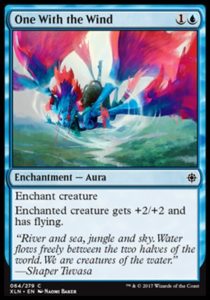
Invisible Stalkers
Spectral Flight was a bonkers Magic card. It was fragile (as all buffing auras are), but it killed a lot of people. It benefited from Innistrad’s weak removal (excepting Silent Departure and Bonds of Faith) and combined with silly cards like Invisible Stalker. As offensive auras always do, it offered a gamble that the damage it enabled outweighed the risk of a two-for-one, and if often won that bet.
One With the Wind is better. Few cards answer it for less than four mana, meaning an enchanted creature can easily get in two swings or more. Ixalan looks to be an aggressive format, making gambling on card advantage to apply pressure an attractive proposition. Even an answered One With the Wind often wins the game—the aura got in ten damage and the opponent had to spend 4-5 mana dealing with the threat as their opponent continued to develop their board. And One With the Wind isn’t alone: Swashbuckling, River Heralds’ Boon, and Pirate’s Cutlass similarly provide fragile, but potent (and effectively hasty) buffs for a discount. This combines with treasure’s propensity for accelerating out threats to speed up clocks and shorten games, making most games a pure race.
To combat this trend towards aggression, Mark of the Vampire should be an excellent counter. It makes a creature similarly resilient and usually wins the race by itself. However, it’s substantially slower, meaning it’s in range of being answered as soon as it’s played, mitigating its utility.
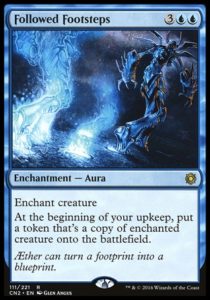
We’ve Been Here Before
I think my grievance with Ixalan has little to do with the set and more to do with a shift in how Limited is developed. Ixalan is designed really differently from what we’ve seen before—extra-greedy splashes are enabled by treasures, auras are really powerful, tribal is more supported than it’s been in years, and there’s a ton of fun to be had slamming dinosaurs and recurring threats from the grave. But only if you can survive the early onslaught. Even if everything feels different, the overall gameplay feels really similar to what we’ve seen lately.
Amonkhet Limited was a very aggressive format with weak removal. Gust Walker was the best common. Exert made blocking unprofitable, so games were often decided by races (and combat tricks often replaced removal spells, since they were cheaper and could get extra damage in). There were cool graveyard shenanigans if you could outlast the initial onslaught, but the best decks sidestepped them by murdering the opponent in the first six turns.
Kaladesh Limited was an aggressive format defined by threats like Thriving Rhino and Renegade Freighter. There were cool shenanigans with energy and artifact engines, but the best decks sidestepped them by attacking their opponents with cheap beaters.
Shadows Over Innistrad Limited was defined by aggressive decks in Naya colors, where werewolves punished any stumbling and humans were resilient to removal. Battle for Zendikar was defined by aggressive Grixis Eldrazi aggro decks which flooded the board and skies.
These five formats are all distinct and have drastically different shenanigans, but they are largely defined by their aggressive decks (which invalidate a lot of the shenanigans) and several were further marred by severe color imbalances.
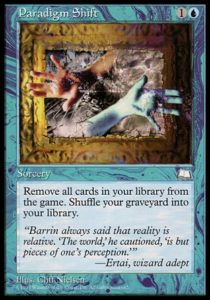
Where We’ve Come
Since Innistrad, we’ve seen common removal weaken, a change I’ve lauded for years. We’ve also seen a rise in the power of creatures (including the subtle but significant change where red and black went from not having bears at common to having bears with upside). As discussed last week, creatures getting stronger taxes removal more, making it worse. When it’s both difficult and less profitable to kill your opponents’ creatures, the best and simplest answer is to play more creatures and race. With removal being weaker and aggression becoming the primary plan, high-risk plays like One With the Wind and cheap combat tricks like Built to Smash become reliable, lower-risk win conditions.
The problem with this subtle but substantial paradigm shift is that it muddles Limited. Once upon a time, we evaluated the speed of a format by comparing it to previous sets. Rise of the Eldrazi was slow, Battlecruiser-style Magic. Zendikar was blisteringly fast. Innistrad was all over the place. Khans was relatively slow, but had warriors and Mardu to keep people from getting too complacent. For the past two years, I’ve not experienced much of a difference in how Limited plays out. The mechanics are continually innovative, but the strategy and speed of the formats are fairly constant—curve out, find ways to push in damage, win the die roll, and don’t rely on slower mechanics.
This strikes me a development problem, and a familiar one at that. Standard suffered because threats had become too strong and removal too weak. Limited has the same issue. If every color has access to powerful common creatures and combat tricks from one to three mana, but most removal costs at least four mana, then the best strategy is to race. Mechanics like Converge, Eternalize, Aftermath are invalidated by aggressive and cost-reducing mechanics like Treasure, Emerge, Exert, and energy (the fast cards like the Thriving and Aether cycles).
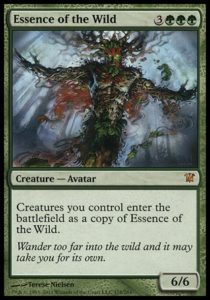
Drastically differently, yet the same
I love a good aggressive format as much as anyone else, but I crave variety most of all. The high speed of recent Limited formats smoothes out their differences. However, the solution seems clear: removal needs to get better in order to counterbalance the dramatic increase in creatures’ power level (that or decrease creatures’ power level, but we’ve been there before and don’t need to go back).
I think it was an amazing choice to remove Lightning Bolt and Doom Blade as common removal. They’re still too good and are problematic for Standard, but I’d no longer be surprised if we saw more removal of slightly lower caliber in Dominaria or Rivals of Ixalan, and more often going forward. Lightning Strike was once common, and could be again. It’ll certainly be a change of pace, and change is good.
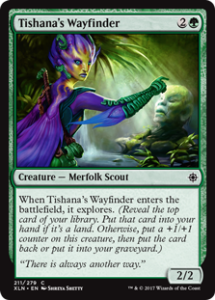
…and then there’s Explore
In this article, I recognized that while I dislike Ixalan Limited, it has little to do with Ixalan itself and more to do with a developmental trend. Here’s the exception.
Last month, I was concerned about the randomness of Explore. I withheld judgment because there’s no substitute for playtesting. I’ve now had a chance to play with and against it quite a bit, and it’s among my least favorite mechanics of all time. Sure, it’s all upside, but hitting a land at most points of the game is substantially worse than having a +1/+1 counter (and a scry). The format is aggressive, meaning you can’t always benefit from hitting an extra land drop and you’re always punished for having an undersized creature.
If Explore were slightly different and you always got a +1/+1 counter and a scry, it’d be way less random. The problem is that every creature with Explore would be way above the curve. As we’ve gone over before, it’s really dangerous for Magic when randomness (beyond the inherent variance of the mana system, drawing from a shuffled deck, and having hidden information) allows cards to be discounted because they might not work as desired. That’s the thinking that got us Collected Company and Aetherworks Marvel.
I am fine losing to a topdecked Miracle (people lose to good topdecks all the time). I think that Cascade is a sweet mechanic (though it’s overpowered and hard to balance). Explore is randomness of a related sort, but shows up far and is game-deciding far too often for my liking.
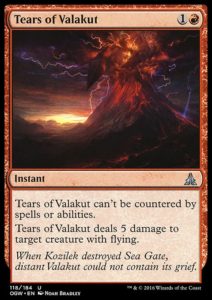
Sorry, Ixalan. I wanted to love you. I took a half-break from Hour of Devastation to be refreshed for you, but you’re too similar to what came right before and have one of the most random and powerful mechanics we’ve seen in a long, long time. Here’s hoping Rivals of Ixalan fixes a lot of your problems (as every small set since the birth of Two Block Paradigm has). But we’ve got several months and releases to go before that happens. Here’s hoping I’m wrong about you and see the error of my ways.
And, as always, thanks for reading.
—Zachary Barash
Zachary Barash is a New York City-based game designer. He works for Kingdom Death: Monster, has an MFA in Game Design from NYU, and does freelance game design.
His favorite card of the month is Moment of Heroism. This unassuming little pump spell looks lackluster (after all, we get +2/+2 combat tricks with upside for W these days), but it can lead to complete blowouts in combat, where you kill a creature and gain 3-5 life for only two mana. It was particularly good in Innistrad, where instant-speed removal was weak and the (second) best deck in the format was an aggro deck overloaded on two drops. Sometimes, you just cast it to gain 5 life and flip the race on your opponent. It’s a delightfully simple card that beginners can understand, but it has powerful enough upside that skilled players can seek to maximize its effectiveness (while also siding it out when it’s irrelevant). That’s a whole lot to pack into a common combat trick with only two lines of text.

